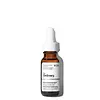What's inside
What's inside
 Key Ingredients
Key Ingredients

 Benefits
Benefits

 Concerns
Concerns

 Ingredients Side-by-side
Ingredients Side-by-side

Water
Skin ConditioningPropylene Glycol
HumectantGlycerin
HumectantOryza Sativa Hull Powder
AbrasiveAmmonium Acryloyldimethyltaurate/Vp Copolymer
Sclerotium Gum
Emulsion StabilisingDiazolidinyl Urea
PreservativeSodium Benzoate
MaskingSodium PCA
HumectantDisodium EDTA
Sodium Lactate
BufferingPotassium Sorbate
PreservativeArginine
MaskingAspartic Acid
MaskingHydrolyzed Wheat Protein
Skin ConditioningPCA
HumectantCentaurea Cyanus Flower Extract
AstringentLinum Usitatissimum Seed Extract
PerfumingHydrolyzed Hyaluronic Acid
HumectantGlycine
BufferingAlanine
MaskingAesculus Hippocastanum Seed Extract
Skin ConditioningSerine
MaskingValine
MaskingLinalool
PerfumingCaramel
Cosmetic ColorantThreonine
Isoleucine
Skin ConditioningProline
Skin ConditioningParfum
MaskingAnthemis Nobilis Flower Oil
MaskingLavandula Angustifolia Oil
MaskingLavandula Hybrida Oil
EmollientOsmanthus Fragrans Flower Extract
MaskingPhenoxyethanol
PreservativeHistidine
HumectantPhenylalanine
MaskingSodium Hydroxide
BufferingPadina Pavonica Thallus Extract
Skin ConditioningWater, Propylene Glycol, Glycerin, Oryza Sativa Hull Powder, Ammonium Acryloyldimethyltaurate/Vp Copolymer, Sclerotium Gum, Diazolidinyl Urea, Sodium Benzoate, Sodium PCA, Disodium EDTA, Sodium Lactate, Potassium Sorbate, Arginine, Aspartic Acid, Hydrolyzed Wheat Protein, PCA, Centaurea Cyanus Flower Extract, Linum Usitatissimum Seed Extract, Hydrolyzed Hyaluronic Acid, Glycine, Alanine, Aesculus Hippocastanum Seed Extract, Serine, Valine, Linalool, Caramel, Threonine, Isoleucine, Proline, Parfum, Anthemis Nobilis Flower Oil, Lavandula Angustifolia Oil, Lavandula Hybrida Oil, Osmanthus Fragrans Flower Extract, Phenoxyethanol, Histidine, Phenylalanine, Sodium Hydroxide, Padina Pavonica Thallus Extract
Water
Skin ConditioningGlycerin
HumectantButylene Glycol
HumectantPropanediol
SolventDipropylene Glycol
HumectantAcetyl Glucosamine
Skin ConditioningNiacinamide
SmoothingPalmitoyl Tripeptide-38
Skin ConditioningAcetyl Tetrapeptide-5
HumectantMyristoyl Nonapeptide-3
Skin ConditioningDipeptide Diaminobutyroyl Benzylamide Diacetate
Skin ConditioningCaffeine
Skin ConditioningEpigallocatechin Gallatyl Glucoside
AntioxidantGallyl Glucoside
AntioxidantFraxinus Excelsior Bark Extract
Skin ConditioningSilanetriol
Arginine
MaskingPentylene Glycol
Skin ConditioningHydroxymethoxyphenyl Decanone
Skin ConditioningPropyl Gallate
AntioxidantMaltodextrin
AbsorbentHydroxypropyl Cyclodextrin
MaskingHydroxyethylcellulose
Emulsion StabilisingXanthan Gum
EmulsifyingCitric Acid
BufferingGlycolic Acid
BufferingSodium Citrate
BufferingPolysorbate 20
EmulsifyingTrisodium Ethylenediamine Disuccinate
Dehydroacetic Acid
PreservativeEthylhexylglycerin
Skin ConditioningBenzyl Alcohol
PerfumingPhenoxyethanol
PreservativeChlorphenesin
AntimicrobialWater, Glycerin, Butylene Glycol, Propanediol, Dipropylene Glycol, Acetyl Glucosamine, Niacinamide, Palmitoyl Tripeptide-38, Acetyl Tetrapeptide-5, Myristoyl Nonapeptide-3, Dipeptide Diaminobutyroyl Benzylamide Diacetate, Caffeine, Epigallocatechin Gallatyl Glucoside, Gallyl Glucoside, Fraxinus Excelsior Bark Extract, Silanetriol, Arginine, Pentylene Glycol, Hydroxymethoxyphenyl Decanone, Propyl Gallate, Maltodextrin, Hydroxypropyl Cyclodextrin, Hydroxyethylcellulose, Xanthan Gum, Citric Acid, Glycolic Acid, Sodium Citrate, Polysorbate 20, Trisodium Ethylenediamine Disuccinate, Dehydroacetic Acid, Ethylhexylglycerin, Benzyl Alcohol, Phenoxyethanol, Chlorphenesin
 Reviews
Reviews

Ingredients Explained
These ingredients are found in both products.
Ingredients higher up in an ingredient list are typically present in a larger amount.
Arginine is an amino acid that is important for human development. Your body uses is it to produce hair keratin and skin collagen.
As a cosmetic ingredient, Arginine has antioxidant properties and can also help repair damaged skin. This ingredient is derived either synthetically or from animals.
Arginine isn't fungal acne safe when used in the presence of other lipids (fats, fatty acids, oils, esters, etc). Oils and fats occur naturally within the skin, so take caution when using Arginine if you're prone to fungal acne.
Learn more about ArginineGlycerin is already naturally found in your skin. It helps moisturize and protect your skin.
A study from 2016 found glycerin to be more effective as a humectant than AHAs and hyaluronic acid.
As a humectant, it helps the skin stay hydrated by pulling moisture to your skin. The low molecular weight of glycerin allows it to pull moisture into the deeper layers of your skin.
Hydrated skin improves your skin barrier; Your skin barrier helps protect against irritants and bacteria.
Glycerin has also been found to have antimicrobial and antiviral properties. Due to these properties, glycerin is often used in wound and burn treatments.
In cosmetics, glycerin is usually derived from plants such as soybean or palm. However, it can also be sourced from animals, such as tallow or animal fat.
This ingredient is organic, colorless, odorless, and non-toxic.
Glycerin is the name for this ingredient in American English. British English uses Glycerol/Glycerine.
Learn more about GlycerinPhenoxyethanol is a preservative that has germicide, antimicrobial, and aromatic properties. Studies show that phenoxyethanol can prevent microbial growth. By itself, it has a scent that is similar to that of a rose.
It's often used in formulations along with Caprylyl Glycol to preserve the shelf life of products.
Water. It's the most common cosmetic ingredient of all. You'll usually see it at the top of ingredient lists, meaning that it makes up the largest part of the product.
So why is it so popular? Water most often acts as a solvent - this means that it helps dissolve other ingredients into the formulation.
You'll also recognize water as that liquid we all need to stay alive. If you see this, drink a glass of water. Stay hydrated!
Learn more about Water